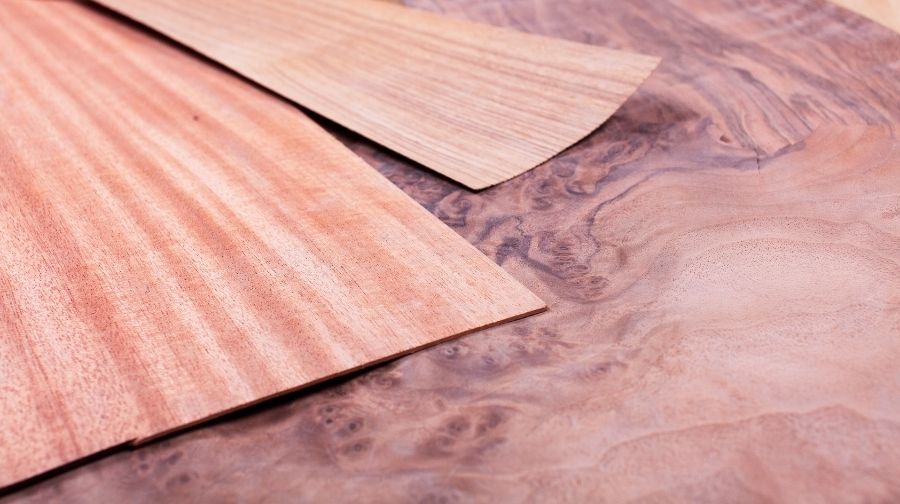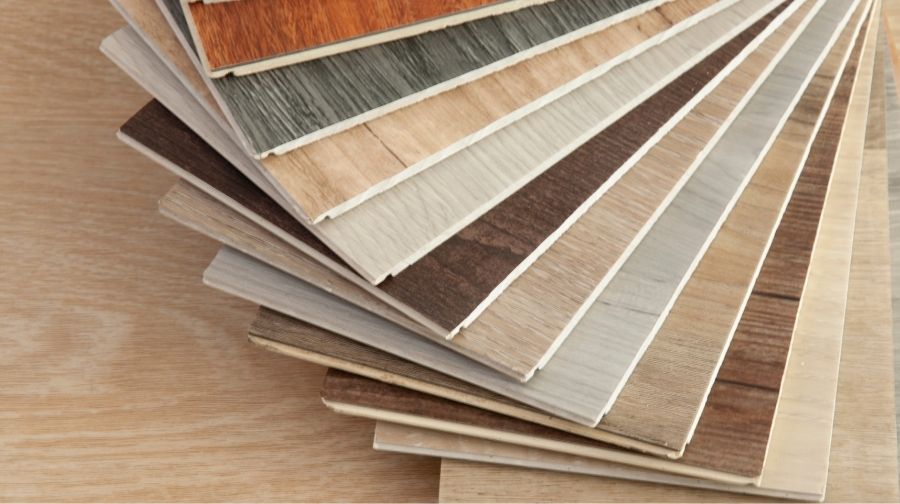
If you are in the market for new furniture, how do you know what type to buy? There are two types of furniture that can be purchased, laminate and veneer. Some people have a difficult time telling the difference between the two because they look similar at first glance.
However, there is one way to tell them apart without taking them out of their packaging or buying an expensive tool. This blog post will teach you how to tell which type of material is being used by examining the furniture’s joints, interior, and exterior.
How To Tell If Furniture Is Laminate Or Veneer
There are a few other ways to tell if furniture is laminate or veneer. One way is to look at the edges of the piece of furniture. If the edges are smooth, then the furniture is probably laminate. If the edges are rough or have a wood grain pattern, then the furniture is probably veneer. Another way to tell if furniture is laminate or veneer is to look at the back of the piece of furniture. If the back is smooth, then the furniture is probably laminate. If the back has a wood grain pattern, then the furniture is most likely veneer.
You can also tell if furniture is laminate or veneer by running your hand over the surface. Laminate is a smooth, non-porous material, so it will feel smooth to the touch. Veneer, on the other hand, is a thin layer of wood, so it will feel like you are touching wood.
If you are still unsure if furniture is laminate or veneer, you can always consult with a professional. A furniture store employee or a restoration specialist should be able to tell you for sure. Knowing whether furniture is laminate or veneer is important because it will affect how you care for the piece. Laminate is much more durable and easy to care for than veneer. Veneer is a thin layer of wood that can be easily damaged, so it requires more careful handling.
Now that you know how to tell if furniture is laminate or veneer, you can make an informed decision about which type of furniture is right for you.
Laminate Vs. Veneer
The veneer is actually a thin slice of wood that has been glued onto another material. It is usually used on particle board or plywood, but it can also be found on hardwoods like oak and maple to give the appearance of solid pieces. The thicker veneers are made with real wood, while thinner ones might not even have any wood in them at all.
It is easy to tell the difference between a veneer and solid wood if you know what to look for because of how they are joined together. Laminate looks similar, but there are some major differences that will be here:
First Difference: The Joints
One of the easiest ways to tell if a piece of furniture is made with real wood or not is by looking at its joints. Solid pieces are joined together in different ways depending on how expensive it was and where they originate from.
There will be an indentation around the edges that you can feel for veneer and laminate. The solid wood will have a seamless and smooth joint, while the other two types might stick out slightly depending on their quality.
Second Difference: The Interior Construction
If you are interested in buying an expensive piece of furniture that is made with real wood or veneer, it is important to check its construction inside before making your purchase. If there are no holes or saw marks, then it is likely that the furniture was made with real wood because they would have needed to drill into it in order for all of their pieces to fit together properly.
Third Difference: The Exterior Construction
Another way you can tell if a piece of furniture is laminate or veneer is by looking at the exterior. If it has a perfectly smooth surface with no visible imperfections, then it definitely isn’t made of real wood.
Solid pieces will have small markings or lines that are part of their natural design, whereas veneers and laminates do not because they were created in factories instead of being hand-made by a woodworker.
Difference Between Veneer & Laminate
Subscribe to Engineering Motive on Youtube
How To Stain Laminate Furniture?
Although the difference between laminate and veneer might seem small, it can have a big impact on your furniture’s quality and durability, depending on what type of material you choose to purchase. If you want to protect your investment, be sure to take these tips into consideration before making any final decisions.

How Can You Tell The Difference Between Laminate And Wood Cabinets?
When you are looking for new furniture, it is difficult to tell the difference between laminate and wood cabinets because they look similar at first glance. However, there is one way to figure out which material is being used before buying them by examining their joints, interior, and exterior.
First Difference: Examine The Joints
The easiest way to tell the difference between laminate and wood cabinets is by examining their joints. Wood has exposed ends on each piece of furniture, while veneer pieces have matching edges that hold them together without showing any seams or gaps in between.
Second Difference: Look Inside Of Furniture And Drawers
Another method to figure out the difference between laminate and wood cabinets is by looking inside of furniture. Wood has no manufacturer markings, while veneer pieces have it printed on the backside where you can’t see it without opening up drawers or doors.
Third Difference: Examine The Exterior Of Furniture
The last method for telling the difference between laminate and wood cabinets is by examining their exterior. Wood has a natural grain texture, while veneer pieces do not have any patterns because they are made from various layers of thin wood pressed together with glue or resin.
How to tell the difference between laminate and veneer (Furniture Flippers NEED to know this!)
Subscribe to Unsophisticated DIY on Youtube
Difference Between Melamine And Laminate?
If you’ve ever wondered if your kitchen cabinets, bathroom vanities, or furniture is made of laminate vs. melamine, we have the answer! Here’s the list of differences that can help you out:
First Difference: Materials
Laminate is made of paper, resin, and cloth. Melamine is made of layers of plastic with a photo-sensitive emulsion between them that causes it to harden when exposed to light. The top layer has patterns cut into the surface so you can see the color underneath.
Second Difference: Durability
Melamine’s biggest advantage is that it has a high resistance to stains and scratches, making it suitable for kitchen cabinets. It’s also very durable against heat – up to 200 degrees Fahrenheit! Laminate isn’t quite as resistant to heat but will last longer than melamine in general.
Third Difference: Colors
Laminate comes with the drawback of being more difficult to color. If you want darker colors, it’s best to use melamine for your cabinets and furniture – not laminate!

Fourth Difference: Weight
Melamine is lighter than laminate by about 25%. So if you need heavy-duty counters or tables that won’t break under pressure, choose the more durable (though also more expensive) laminate.
Fifth Difference: Price
Laminate is the more affordable option with a price that ranges from $0.80 to $30 per square foot, depending on quality and design. Melamine’s price range starts at about $15 per square foot but can climb as high as several hundred dollars for custom designs.
Sixth Difference: Fire Resistance Rating
Laminate has a Class A fire-resistance rating, meaning it won’t catch fire or release toxic gasses when exposed to heat up to 500 degrees Fahrenheit for 30 minutes. Melamine only resists low levels of heat and can emit smoke and burning particles if exposed at higher temperatures than laminate.



